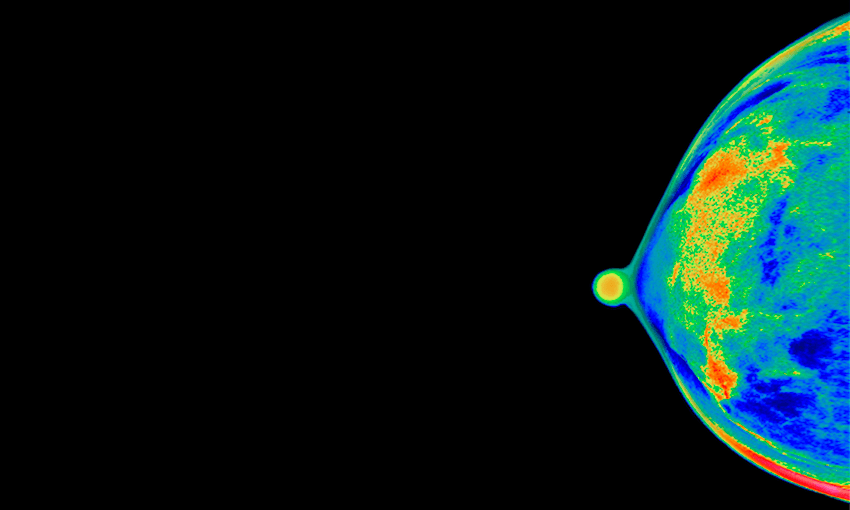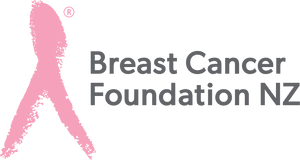The facts are simple: mammograms save lives. But what’s it like to have one? Emily Writes talks to Dr Monica Saini about keeping your breasts at their best.
Today, nine women will be diagnosed with breast cancer. As you read this, at least nine women will be grappling with a new diagnosis. Whether they survive this terrible disease may depend on whether the cancer was detected early or not.
More than 650 women will die from breast cancer in 2020. But there is hope – 92% of women whose cancer is detected on a screening mammogram will survive.
About 3,300 women and 25 men are diagnosed in New Zealand each year. Mammograms are saving lives every day.
Most of us know someone whose life has been impacted by breast cancer. Yet many women are afraid to get a mammogram or are unsure of whether they should.
Dr Monica Saini is an international expert of breast imaging and a breast radiologist at Hutt Hospital in Wellington. She serves on Breast Cancer Foundation New Zealand’s Medical Advisory Committee and is also the chief medical officer at Volpara Health Solutions, a New Zealand-based health technology company working to improve breast cancer detection.
“I’m a visual person and radiology is all about interpreting subtle changes in a woman’s images. I fell in love with it because I had a wonderful mentor who could tell a story about a woman by just examining her chest x-ray,” she says.
“There’s an art to interpreting mammography and holistically understanding a woman’s body is key.”
She knows better than anyone what we all need to know about breast health. We spoke about the subject recently and here’s what she told me.
Emily Writes: So what exactly is a mammogram?
Dr Saini: A mammogram is an x-ray. It takes two images of each breast and it requires a squeezing of the breasts between two plates so that the breast tissue can be spread out and a radiologist can identify changes including breast cancer. Mammograms look through the breast tissue.
Most of the time there will not be cancer.
What does it feel like to get one?
We put the breast between two plates. There’s a squeeze that happens. It’s uncomfortable for some. It takes literally five seconds for each image. The whole exam probably takes five to 10 minutes. And despite some discomfort it’s a lot more comfortable than having breast cancer.
Will I be exposed to radiation or anything?
This is an important question. The radiation with a digital mammogram is very low. It’s important to understand that we are exposed to radiation every day. If you take a flight from Wellington to Northern Australia you will receive the same radiation dose as a mammogram.
There are many research studies checking and ensuring the safety of mammography. There is no increased risk of developing breast cancer from mammography.
What if I feel self-conscious? Do you have to be naked?
It’s a very personal and intimate exam so it’s understandable that people will be self conscious and we are very aware of that. As radiologists our goal is to make it as easy for you as possible.
I recommend you wear a button down blouse or jersey with a separate bottom. You will need to move your top and bra, we give you a gown to cover up. You can keep your pants and shoes on. We will remove the gown during the exam and then you put it back on straight after. If you have any other cultural issues please let the mammography technologist who is performing the exam know.
Who needs to get one?
Every woman over 40 and who is not breastfeeding should be going for mammograms. It doesn’t matter if you don’t have a family history of breast cancer, 90% of women who are diagnosed with cancer have no family history. If you are of eligible age, get your mammogram!
BreastScreen Aotearoa’s guidelines recommend screening at the age of 45, every two years. Remember this is a publicly funded service so there’s no cost to you.
But because your risk of breast cancer begins to increase in your 40s, the Breast Cancer Foundation New Zealand (BCFNZ) recommends yearly screening from the age of 40 until you are 50. If at 50 you have no risk factors then you screen every two years.
The important caveat here is that breast cancer screening before the age of 45 is not publicly funded so you would need to go to a private clinic.
How do I know if I need one?
If you are under 40, or otherwise unsure, talk to your GP about whether you need to start screening. If you have an extensive family history of breast or ovarian cancer speak to your GP about referral to a high risk clinic.
Is there a “best time” to get a mammogram? And how often should you get them?
If you are premenopausal, scheduling your mammogram a week after your period may reduce breast sensitivity. That said, it is important to get your screening and if it’s not convenient to reschedule, better to just get it done and cross this life-saving test off your to-do list.
As stated earlier you should be getting your mammograms, at a minimum, every two years. If you are under 50 you can follow the BCFNZ guidelines for yearly mammograms.
Most importantly, stick to the regimen; we need to see you at a minimum every two years. If you want to bask in the benefit of having reduced risk of dying from breast cancer then you need to return every two years and get your screening mammogram until at least age 70.
What if I have a breast lump or pain?
No matter what age you are, if you have a breast problem such as a lump, pain, skin or nipple changes, please see your GP ASAP.
Your GP can perform a breast exam and check your breasts. They can also determine if you need a mammogram or ultrasound and refer you to a breast centre. These tests are publicly funded at no or little cost to you.
So don’t delay. If you are unsure have it checked out and get that peace of mind that you have sorted it.
How should you do a breast exam?
While there are varying schools of thought on doing self breast checks, it’s important to not be afraid of your body. No one will better know your body than you. You can learn how to check your breasts at BCFNZ’s website.
It’s an important part of breast health when you do a self-breast exam, or when your doctor does a breast exam, to know what is normal for your breasts and to note how your breasts feel every month. While it can be challenging to know what is normal, your GP can help provide guidance.
Does a mammogram cost money?
It’s free for women over 45 to get a mammogram every two years. If you’re under the age of 45 and a GP recommends it you can also be seen for free sooner. As an American making New Zealand my home I think that having publicly funded health care is a gift – because I have lived and experienced the other side of the coin where there is no public health care. People came in later and later because they couldn’t afford a mammogram and it was heartbreaking to see. It was getting harder and harder with unemployment and without health insurance. In the United States you see breast cancer rates going up as the rate of mammograms drops. It gives you a different perspective.
Should I be telling my friends and family to get mammograms?
Absolutely, if they are of screening age! Getting a mammogram is absolutely the best thing you can do to reduce deaths from breast cancer and improve your survival. The best prevention we have is early detection. No one wants breast cancer but if you do develop it – let’s find it when it’s small and it hasn’t spread. This means less invasive surgery and possibly avoids or reduces radiation and chemotherapy. Finding cancers at a small size may also be the difference of keeping your breast.
If you are breastfeeding can you still get a mammogram?
We say ideally, if you’re breastfeeding, you should wait six months after you finish to get a mammogram. However, if you’ve been pregnant and breastfeeding for a long period and you’re over 45 we don’t necessarily want you to wait four years. Speak to your GP to see if it’s worth getting one sooner.
What if your breasts are really small? Do you still need one?
You still need a mammogram. Breast cancer impacts breasts of all sizes and it doesn’t make a difference to risk. Those who perform the exams are very well trained and equipped; they can make a mammogram work no matter your breast size.
If you’re a trans man and you’ve had top surgery, do you still need a mammogram?
This will vary depending on the transgender person.
If a transgender person has had breast tissue removed it’s unlikely they removed the nipple and all of the breast tissue. I would consult with their surgeon as to what breast tissue remains. But if there is residual breast tissue they should still have a mammogram. Transgender women who are on female hormones should be screened. We still have very little long term data on transgender people but it’s important to address these health questions and not dismiss them. Transgender patients should have a conversation with a specialist or GP for further advice.
Where do I get one?
To get a mammogram you can phone BreastScreen Aotearoa on 0800 270 200 or you can fill out a short form on their website. They’ll be in touch to book you in. If you want to go to private, have your GP send a referral to your local radiology center.
I don’t have any symptoms or a family history, so do I need to worry about getting one?
Well, 95% of women who have breast cancer don’t have a family history, so don’t hang your hat on that. Women have a 92% chance of surviving breast cancer 10 years or longer if the cancer is detected by a mammogram. That’s pretty great odds.
Nobody knows your body better than yourself. Your breasts are just as important as the rest of your health. Just as we have blood pressure checks, it’s important to get mammograms regularly. It could save your life.
October is Breast Cancer Awareness Month and there are loads of different ways to get involved – from being breast-aware, to helping to raise vital funds for Breast Cancer Foundation NZ’s work in research, education and support. Visit breastcancerfoundation.org.nz to learn more.


